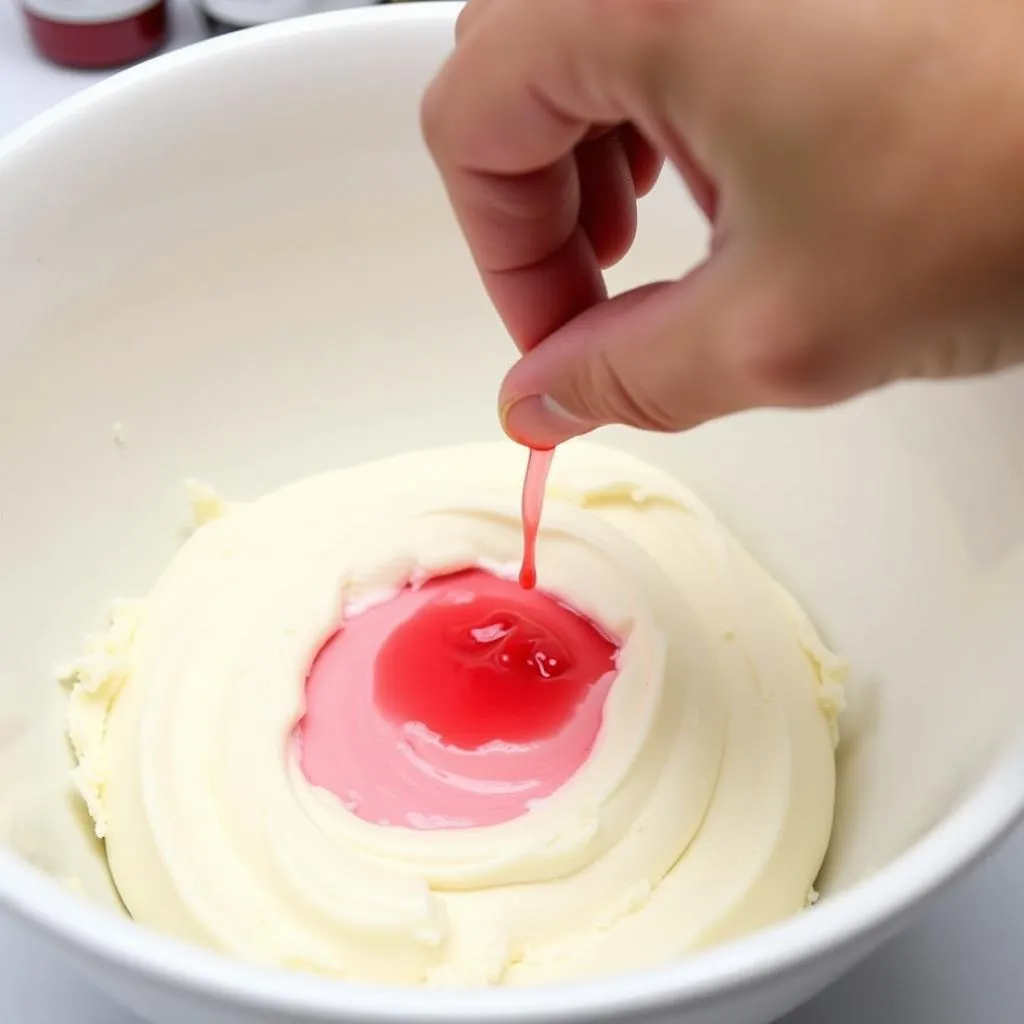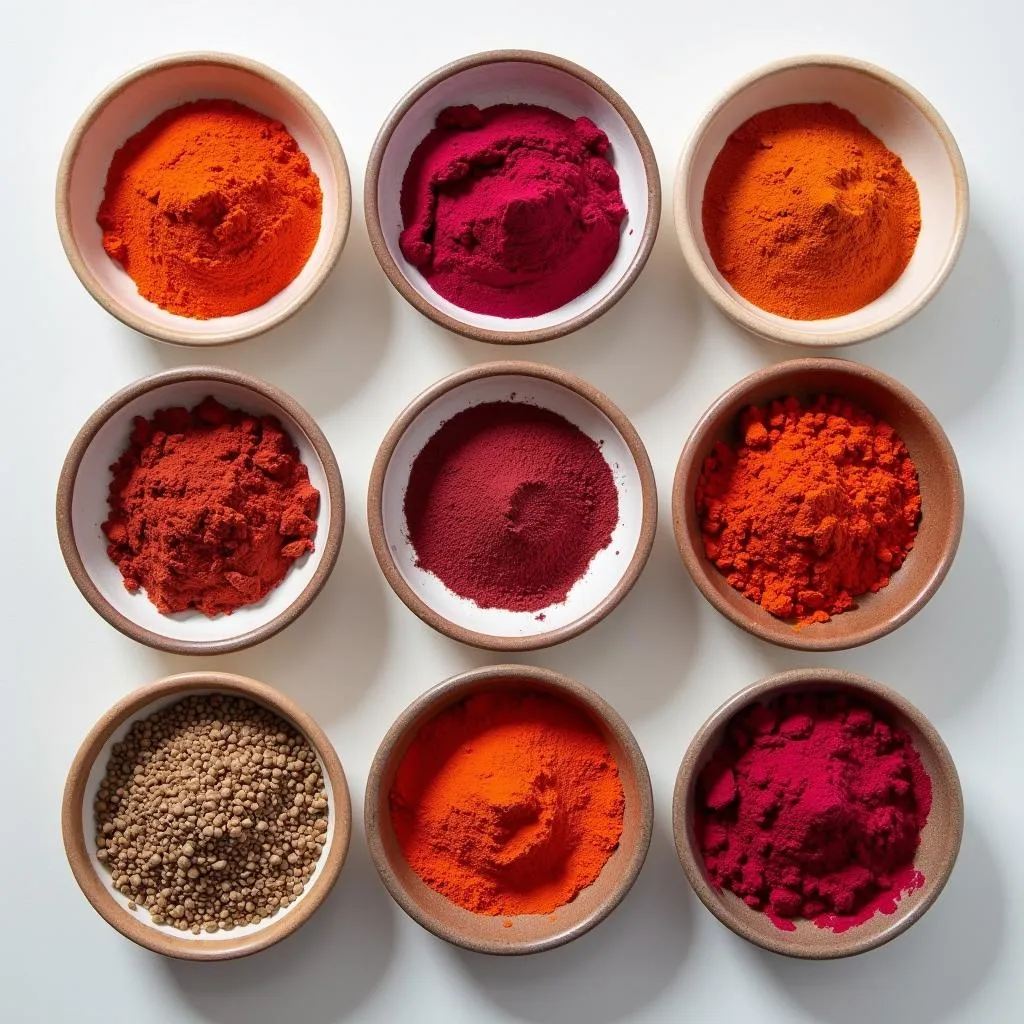Red food coloring can be a fickle friend. Sometimes it produces a vibrant, show-stopping crimson, and other times it yields a disappointing, watery pink. If you’re looking to achieve a deep, rich red in your culinary creations, there are a few tricks you can use to make red food coloring darker and more potent.
Understanding the Factors Affecting Red Food Coloring
Before we delve into the solutions, it’s helpful to understand why red food coloring sometimes appears lighter than desired. Several factors can influence the final color:
- Type of Food Coloring: Liquid food coloring, commonly found in supermarkets, tends to be less concentrated compared to gel or paste food coloring.
- Ingredients: The ingredients in your recipe, particularly their pH levels, can interact with food coloring and alter its hue.
- Quantity: Naturally, using more food coloring will result in a darker shade. However, using excessive amounts can affect the taste and texture of your food.
Effective Ways to Make Red Food Coloring Darker
Here are some proven techniques to intensify your red food coloring:
1. Choose Concentrated Food Coloring
Opt for gel or paste food coloring over the liquid variety. These are more concentrated, meaning you need a smaller amount to achieve the desired color intensity.
2. Adjust the pH
The acidity or alkalinity of your recipe can impact the vibrancy of red food coloring. Adding a pinch of baking soda to your mixture can deepen the red hue. Conversely, if your recipe is already basic, a small amount of acid, such as lemon juice or vinegar, might help.
3. Use Heat Strategically
Heat can sometimes intensify colors. If your recipe involves baking, consider adding the food coloring towards the end of the baking process to minimize color loss.
4. Layer the Color
Instead of adding all the food coloring at once, try layering it gradually. Add a small amount, mix well, and assess the color. Repeat until you achieve the desired shade.
 Layering Red Food Coloring for Intensity
Layering Red Food Coloring for Intensity
5. Experiment with Natural Alternatives
For a more natural approach, consider incorporating ingredients that impart a red hue. Beetroot powder, for instance, can provide a beautiful reddish-pink color to frostings and doughs.
 Natural Red Food Coloring Alternatives
Natural Red Food Coloring Alternatives
Tips for Using Red Food Coloring
- Start Small: Always begin with a small amount of food coloring and gradually add more as needed.
- Mix Thoroughly: Ensure the food coloring is evenly distributed to avoid streaks or blotches.
- Consider the Base: The color of your base will influence the final shade. A white base will yield a truer red, while a yellow base might result in an orange-red hue.
“When working with red food coloring, remember that less is more,” advises renowned pastry chef, Emily Carter. “Start with a small amount, mix well, and patiently build up the color until you achieve the perfect shade.”
Conclusion
Making red food coloring darker is achievable with a few simple techniques. Whether you choose concentrated food coloring, adjust the pH, or explore natural alternatives, remember to experiment and have fun with the process. With a little practice, you’ll be creating stunning, vibrantly red culinary masterpieces in no time!
FAQs
Q1: Can I use red food coloring in hot liquids?
Yes, you can use red food coloring in hot liquids. However, excessive heat can sometimes cause the color to fade slightly.
Q2: How do I prevent red food coloring from staining my hands?
Wearing gloves is the best way to prevent staining. If you do get food coloring on your skin, try rubbing the stain with a mixture of baking soda and water. For more tips, check out our guide on how to get food coloring off fingers.
Q3: Can I mix different colors of food coloring to make red darker?
While it’s possible to mix food coloring, it’s generally not recommended to darken red. Adding blue, for instance, would create a purple hue. You can experiment with adding a touch of brown for a deeper, more burgundy shade. You can also learn how to make the color caramel for a rich brown hue.
Need More Help?
For personalized color advice or assistance with your specific culinary project, feel free to contact our color experts at Color Box Hanoi. We’re always happy to help you create vibrant and delicious masterpieces! You can reach us at 0373298888 or [email protected]. Visit our store at 86 Cầu Giấy, Hà Nội, where our team is available 24/7 to assist you. Don’t forget to check out our other helpful guides, like how to make peach colored frosting with food coloring and how to make skin color food coloring.

